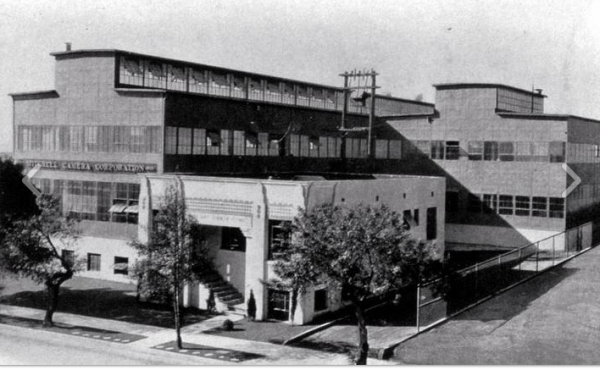A group of historical preservation advocates have filed an application with National Register of Historic Places to have the Factory building declared a historic resource.

The group is the West Hollywood Heritage Project, organized last year by Kate Eggert and Krisy Gosney. In an announcement of the application, Eggert and Gosney say that if approved the Factory would become the first West Coast LGBTQ property on the National Register.
The building known as The Factory is located at 665 N. Robertson Blvd., south of Santa Monica, and currently serves as a venue for nightlife events. Jason Illoulian of Faring Capital has developed a plan to replace the building with a project called Robertson Lane that will include a hotel with more than 250 rooms, underground parking with more than 1,000 spaces and cafes and small retail spaces. The project also will include a 30- to 35-foot-wide lane providing a visual and physical connection between Robertson Boulevard and La Peer.
Last year the National Trust for Historic Preservation, a different organization, put the Factory on its list of America’s most endangered historic places. The annual list of the trust, which is a privately funded nonprofit, spotlights important examples of the nation’s architectural, cultural and natural heritage that the trust sees as being at risk of destruction or irreparable damage. More than 250 sites have been on the list over its 28-year history.
Putting the building on the National Register will bolster arguments of local preservationists that it should be preserved. There is, however, no other significant advantage other than making the building eligible for federal tax credits for preservation efforts and requiring that a study be conducted before any federal funds could be spent on demolishing it.
A larger organization, the West Hollywood Preservation Alliance, also has called for preserving the Factory and has been in negotiations with Illoulian on the matter.
Preservation activists have cited what some see as the Factory’s importance in gay history. It once was the home of Studio One, a gay disco that opened in 1974 and drew celebrities such as Patti LaBelle, Joan Rivers and Liza Minnelli along with as many as 1,000 gay men.
The Factory is a Truscon Steel Company-designed industrial building built in 1929 to house the Mitchell Camera Corporation, whose cameras enabled films to go from silent to “talkies,” and continued to influence camera technology until the digital era arrived in the early 2000s. Following Mitchell’s move to the suburbs in 1946, The Factory was used variously as a cosmetics warehouse, a furniture showroom, a celebrity nightclub, an antique market and an experimental theatre.
“At The Factory, Mitchell Camera designed and made cameras that revolutionized filmmaking and gave rise to a new film artist – the cinematographer,” said Kate Eggert in an announcement of the National Trust application. “Orson Wells’ cinematographer Gregg Toland consulted at The Factory on the camera that he would use to shoot Citizen Kane.”
Optometrist Scott Forbes, who opened Studio One at the Factory, said it “was planned, designed and conceived for… gay male people. Any straight people here are guests of the gay community!”
In 1984, the first major AIDS fundraiser happened at Studio One for AIDS Project Los Angeles; despite having been a celebrity hang-out for a decade, no celebrity would participate in the fundraiser except for Joan Rivers. Rivers said she received death threats.
“Joan Rivers was, up until that point, the only person who ever did anything to raise money to help fight AIDS or help people with AIDS. There were no drugs, the only thing you could do is help them, comfort them during dying. It was all they could do…raise money for hospice,” said Lloyd Coleman, CEO of Rocket Entertainment, the company that produced the shows at the Backlot Theatre.
Gosney said the next step in the process is a hearing before the Historic Register staff. “We’re excited to hopefully bring the honor of the first West Coast LGBT National Register listing to West Hollywood, and to honor a place that was pivotal to film history and to gay rights and the gay community.”

The Factory used to be Studio One and The Backlot. Good times!!
I was the AIDS Project Los Angeles (APLA) Director of Volunteers from 1983 to 1989. I was very involved in the Joan Rivers fundraiser which was held on March 11, 1984 and represented APLA. But this was NOT solely an event for APLA. It also benefitted Aid for AIDS and Shanti. How history becomes rewritten. Just like the myth that Craig Miller was THE creator of AIDS Walk LA. It was created by Craig AND Richard Zeichik who has been obliterated from the history of this event, even by APLA itself. Oh, and, yes…Joan did receive death threats.